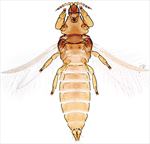
Female

Antenna

Antenna
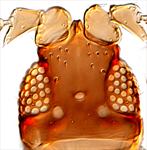
Head
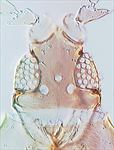
Head
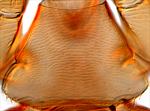
Pronotum
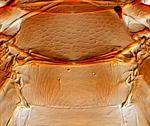
Mesonotum & metanotum

Abdominal tergites

Tergites
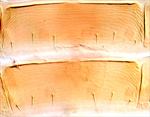
Abdominal sternites
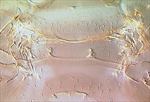
Mesofurca

Fore wing
Female fully winged. Body and legs brown, tarsi and antennal segment II yellow; fore wings light brown. Antennae 8-segmented, segment II with external margin produced and bearing an apical sensorium; segments III & IV each with a simple sense cone. Head strongly prolonged in front of eyes, vertex with 10–16 setae. Pronotum trapezoidal, with 2 pairs of prominent posteroangular setae. Fore coxae enlarged and transverse, fore femora swollen. Meso and metafurca weakly developed. Fore wing slender, apex pointed, first vein with 3 setae distally, second vein with 3–4 widely spaced setae. Tergites medially with lines of sculpture weak; antecostal ridge of tergites II–V with no tubercles; craspedum small on tergites I–VIII. Ovipositor weak, without teeth. Sternites II–IV with transverse lines of sculpture.
The genus Arorathrips comprises 16 New World species (Nakahara & Foottit, 2012). These all differ from the members of Chirothrips in having the mesothoracic endofurca greatly reduced. A. spiniceps is unusual in having the head strongly produced in front of the eyes.
Breeding within individual florets of various Poaceae, but with no recorded specificity.
Probably originally from Central America, but widespread in North America, and recorded in low numbers from many different countries, including Mexico, Cuba, Hawaii, New Guinea, Solomon Islands and northern Australia.
THRIPIDAE - THRIPINAE
Arorathrips spiniceps (Hood)
Chirothrips spiniceps Hood, 1915: 12
Chirothrips sacchari Moulton, 1936: 181
Nakahara S & Foottit RG (2012) Review of Chirothrips and related genera (Thysanoptera: Thripidae) of the Americas, with descriptions of one new genus and four new species. Zootaxa 3251: 1–29.